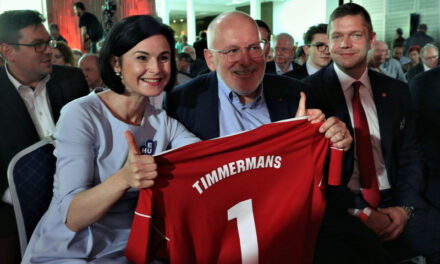I still don't understand how the boots get on the table? How can the community of soccer ultras and rainbows be reconciled? How is it possible that Péter Jakab, who is grinning in the background behind communists and liberals, can lead voters with a radical national sentiment. How is it possible that they are still communicating a primary election, when it seems obvious that this is all just fluff. What kind of government do they want to form if a miracle happens to them? According to Válasz Online, it will not be a six-party coalition. So how is it now?
"Gergely Kárácsony's 99 movement serves in part to give body and mass to the rapid merger of the MSZP, the LMP and Párbeszéd, and this should be the future 'flagship'," the newspaper writes.
The paper believes that Jobbik led by Péter Jakab and the bloc of Ferenc Gyurcsány will have "a few words" for this.
"Péter Jakab and Jobbik are more confident in their key role - and to this end, they are pursuing "stealth integration". The party will run independently in the primary elections in only six of the 106 individual districts; but this is also only a snapshot, it is quite possible that he will end up in alliance with someone or people everywhere. Around this time, DK has 33 private candidates, not yet supported by anyone else, and Momentum has 26, so these are the least successful parties (while the MSZP-Párbeszéd is independent in 19 constituencies, the LMP is independent in nine constituencies), they write.
According to the newspaper's sources, it is not true that "masses of civilians with no major political history, but who are well-known in the respective constituencies, with overwhelming momentum and spotless, would line up". The paper mentions Péter Márki-Zay's movement, whose list leader Gusztáv Almási-Kecskés started from Fidesz, then ended up in the Everyone's Hungary Movement (MMM) with the involvement of the Liberals.
According to the paper's opposition sources, "it may even come in handy that each party is able to make hair-raising local alliances with any other, since once in life they get into government, they can form coalitions along oiled bargaining processes." According to Válasz Online, in 2018, Fidesz only achieved close to 50% results in 47 districts against the then still fragmented opposition, and there are only 27 districts that can be considered certain, where the victory of the ruling party can even be predicted. According to the newspaper, the 47% list victory obtained at that time can also be changed. Válasz Online believes that, comparing all the data, the opposition does not even need to start primary elections in more than 30-33 districts.
I don't think it's worth it! By then everyone will know: their king is naked!
Source: mandiner.hu
Photo: mandiner.hu












